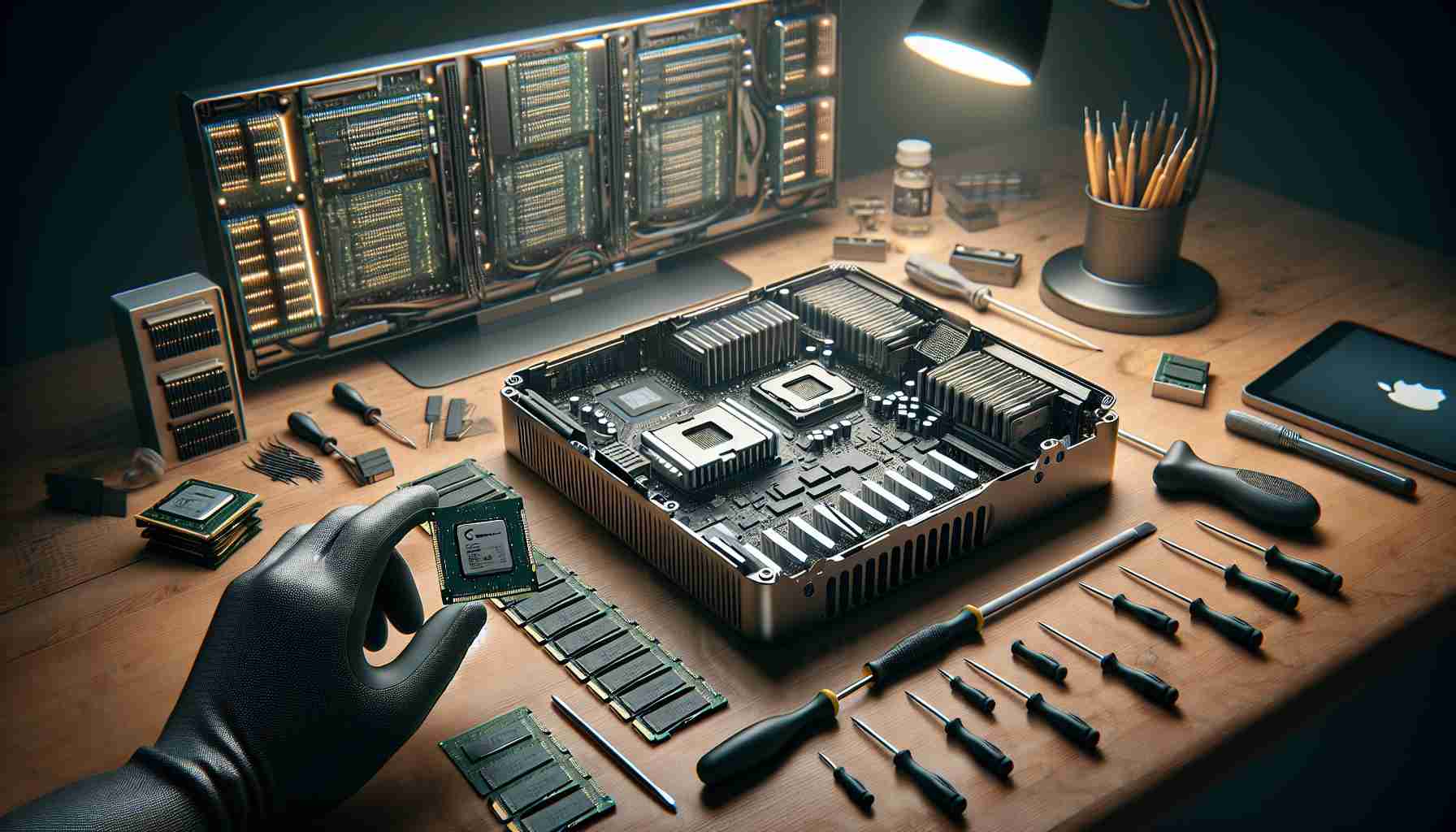Upgrading components in a computer can sometimes lead to compatibility challenges. A user who previously equipped their 8-Core CPU with 2933 R-DIMMs is now facing issues after upgrading to a 16-Core configuration in a 2019 Mac Pro model, specifically the w3245m variant.
In older Mac Pro models, like the cMPs 5,1, users could often increase memory speeds by installing appropriate DIMMs. For example, this would allow an upgrade from 1066 MHz to 1333 MHz if the right hardware was used. However, the transition to newer architectures presents different hurdles.
It is crucial to ensure that the RAM modules are fully compatible with the new CPU architecture. Users may need to check specific settings or configurations to enable the system to recognize changes in RAM. If the Mac Pro fails to register the new RAM after the CPU upgrade, it might be due to issues such as improper installation, firmware requirements, or unrecognized DIMM specifications.
Therefore, it would be beneficial for users to consult the official documentation or support forums dedicated to Mac Pro systems. This can provide valuable insights on how to troubleshoot RAM recognition problems post-upgrade and ensure optimal performance from the new CPU unit.
Exploring RAM Compatibility with CPU Upgrades in Mac Pro Machines
Upgrading RAM alongside a CPU in a Mac Pro machine can significantly boost performance, but it also raises concerns about compatibility. Understanding the nuances of how RAM interacts with different CPU configurations is essential for a successful upgrade. This article delves deeper into the intricacies of RAM compatibility when upgrading CPUs, particularly in Mac Pro machines.
Key Questions Regarding RAM and CPU Compatibility
1. **What are the specific RAM requirements for the Mac Pro 2019 models?**
The 2019 Mac Pro supports both DDR4 ECC (Error-Correcting Code) and R-DIMM configurations. Users should ensure that the RAM modules meet the specifications of 2933 MHz or 2666 MHz, depending on the selected CPU configuration.
2. **Can I mix different sizes or brands of RAM?**
Mixing RAM sizes or brands is generally not recommended as it can lead to instability or performance degradation. For optimal performance, it’s advisable to use identical RAM modules in each memory channel.
3. **Does the RAM speed affect CPU performance?**
Yes, the speed of the RAM can impact the overall performance of the CPU. Using slower RAM than what the CPU can support can bottleneck performance, especially in memory-intensive applications.
Challenges and Controversies
Compatibility issues often arise due to a lack of clear documentation on what RAM modules are officially supported with specific CPUs in the Mac Pro line. While Apple provides some guidance, many users report challenges in finding third-party RAM that meets the requirements. Furthermore, users may encounter issues related to firmware compatibility—older RAM may not be compatible with newer CPUs because of updates in the memory controller.
Additionally, GPU workloads might require different kinds of RAM configurations, especially when professionals are using their Mac Pros for tasks like video editing or 3D rendering. It’s crucial to consider these needs when planning upgrades.
Advantages of Upgrading RAM Alongside CPU
1. **Improved Performance:** More RAM allows for better multitasking and performance in memory-intensive applications.
2. **Future-Proofing:** Upgrading both CPU and RAM can lengthen the lifespan of a machine, making it capable of handling future software needs.
Disadvantages of RAM Upgrades in CPU Context
1. **Cost:** High-quality RAM is costly, especially ECC RAM, which can significantly increase upgrade costs.
2. **Installation Complexity:** There’s a risk of incorrect installation, leading to system instability. It also requires users to have a decent understanding of hardware compatibility.
Conclusion
Before proceeding with a RAM and CPU upgrade in a Mac Pro machine, users should conduct thorough research on compatibility, pay attention to the specifications, and seek advice on community forums if necessary. Leveraging resources like Apple Support can also provide critical insights for ensuring a successful upgrade experience. Upgrading components can yield substantial gains in performance, but clarity about compatibility is key to realizing those benefits.
The source of the article is from the blog trebujena.net
